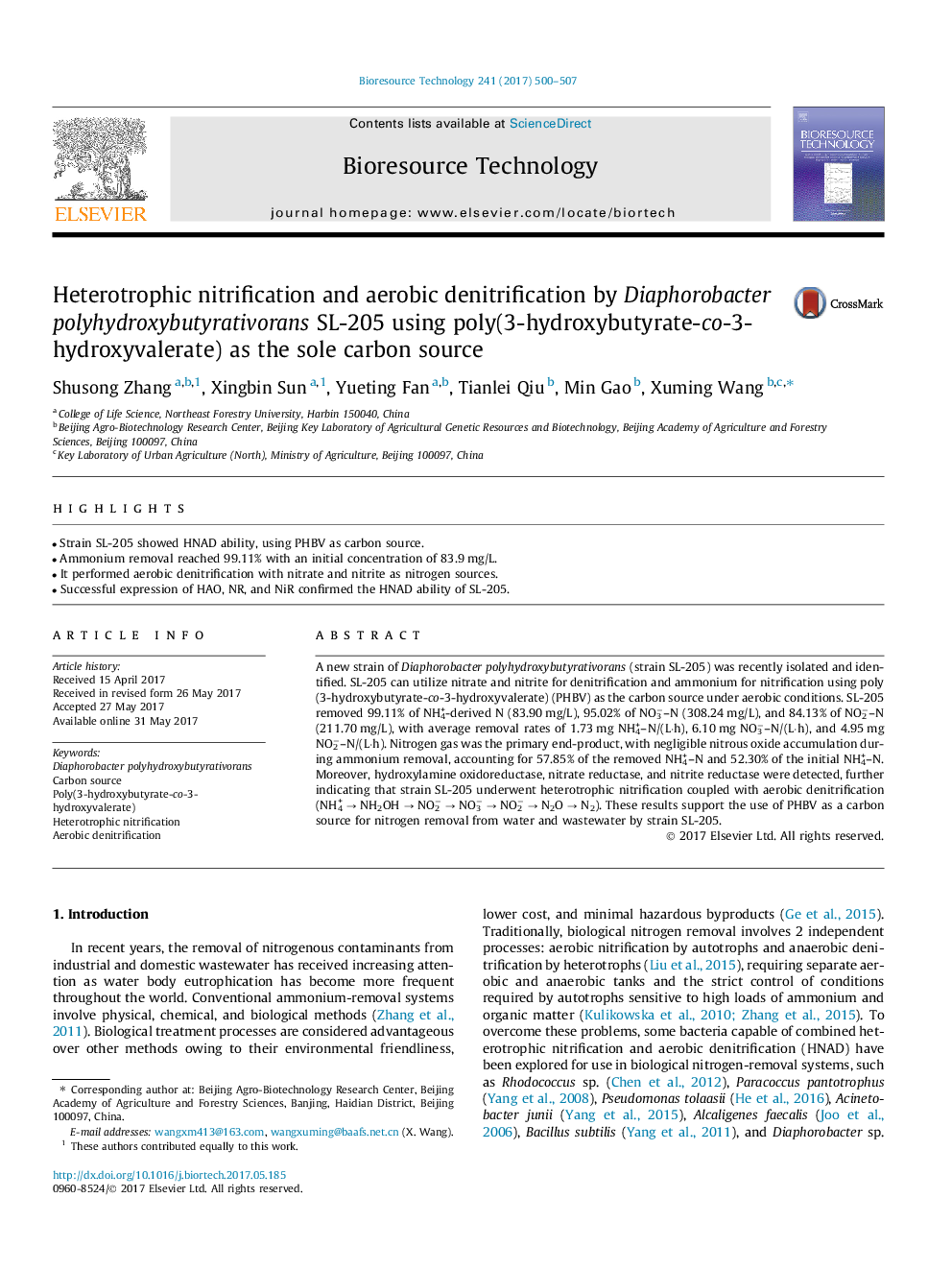| Article ID | Journal | Published Year | Pages | File Type |
|---|---|---|---|---|
| 4997021 | Bioresource Technology | 2017 | 8 Pages |
Abstract
A new strain of Diaphorobacter polyhydroxybutyrativorans (strain SL-205) was recently isolated and identified. SL-205 can utilize nitrate and nitrite for denitrification and ammonium for nitrification using poly(3-hydroxybutyrate-co-3-hydroxyvalerate) (PHBV) as the carbon source under aerobic conditions. SL-205 removed 99.11% of NH4+-derived N (83.90 mg/L), 95.02% of NO3â-N (308.24 mg/L), and 84.13% of NO2â-N (211.70 mg/L), with average removal rates of 1.73 mg NH4+-N/(L·h), 6.10 mg NO3â-N/(L·h), and 4.95 mg NO2â-N/(L·h). Nitrogen gas was the primary end-product, with negligible nitrous oxide accumulation during ammonium removal, accounting for 57.85% of the removed NH4+-N and 52.30% of the initial NH4+-N. Moreover, hydroxylamine oxidoreductase, nitrate reductase, and nitrite reductase were detected, further indicating that strain SL-205 underwent heterotrophic nitrification coupled with aerobic denitrification (NH4+ â NH2OH â NO2â â NO3â â NO2â â N2O â N2). These results support the use of PHBV as a carbon source for nitrogen removal from water and wastewater by strain SL-205.
Keywords
Related Topics
Physical Sciences and Engineering
Chemical Engineering
Process Chemistry and Technology
Authors
Shusong Zhang, Xingbin Sun, Yueting Fan, Tianlei Qiu, Min Gao, Xuming Wang,
